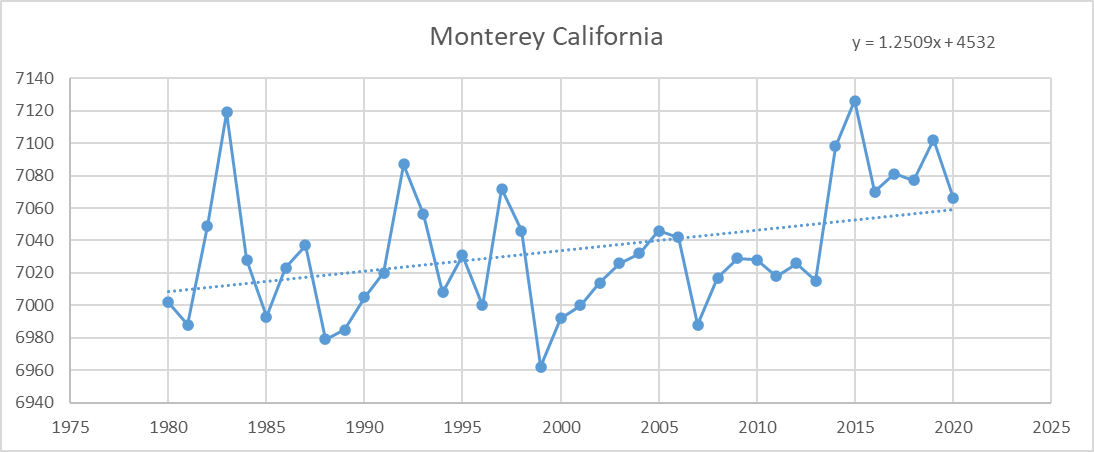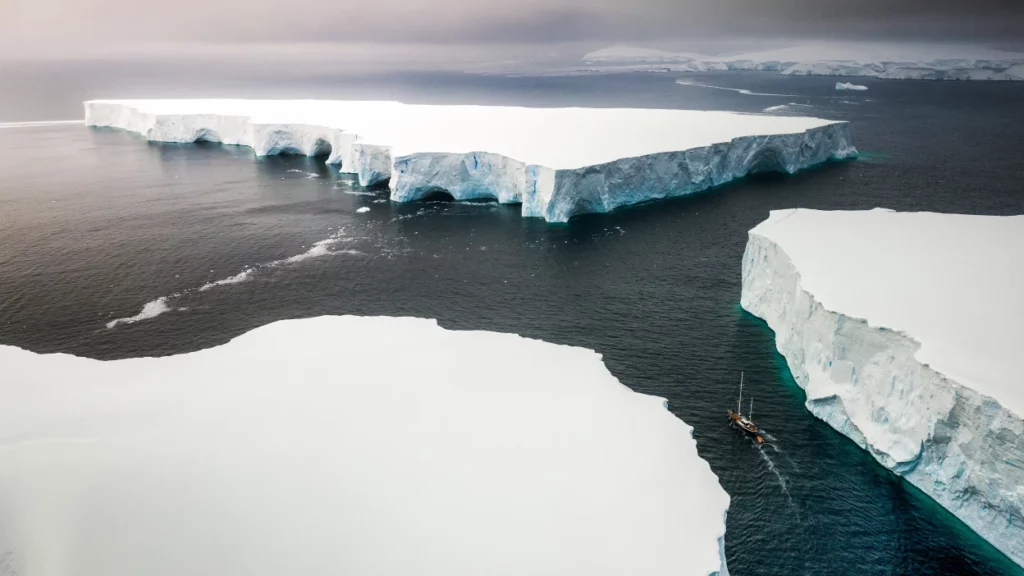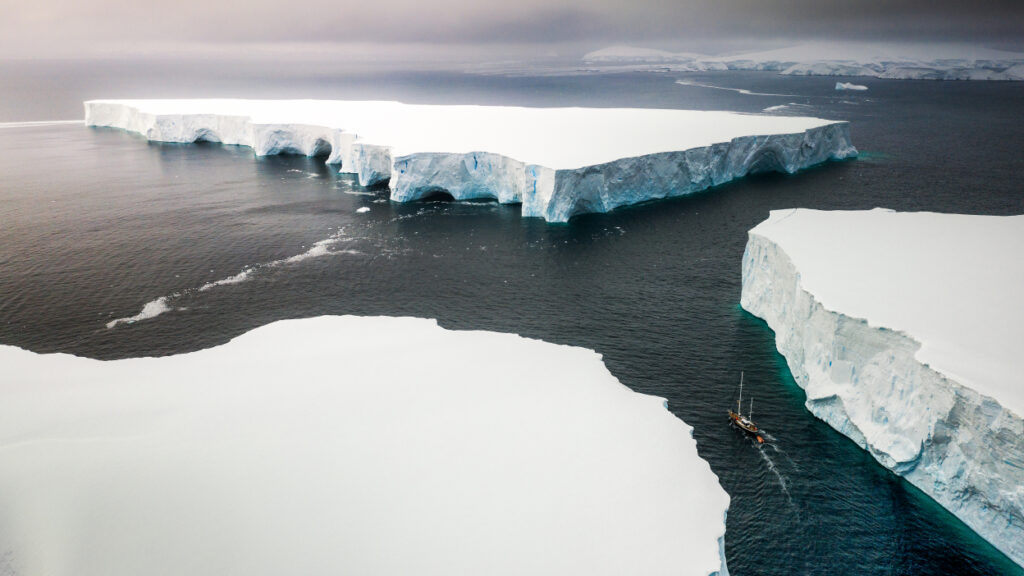With winter stretching into its sixth month here in Ontario, CDN needs a holiday. And where better than by the seashore somewhere warm? Except we hear the seas are rising due to climate change, threatening to inundate all our favourite holiday spots. Indeed National Geographic just started a piece by hissing that “The world’s seas already are rising faster every year” before having the gall to melt the Thwaites Glacier yet again and send the waters up two feet in short order. But is it true? Are they “rising faster every year”? Well, we decided to take a look by launching a new, ‘round the world tour of seaside locations to assess the threat. And while we wish we had the budget to go in person, the next best option is to get the data from the handy online archive at the Permanent Service for Mean Sea Level at Liverpool’s National Oceanography Centre, focusing on places with continuous records back to 1980. We start this week in sunny Monterey California, where sea levels over the past 40 years haven’t exactly been living up to the alarmist warnings:

Seas are rising at about 1.2 mm per year, which means it will take 799 years to rise one meter. Which should give residents plenty of time to build a sea wall.
As you can tell by the chart the trend was actually downwards up to 2014, at which point an El Nino arrived which, among other things, tends to create a temporary rise in sea levels in some locations. But even if the new trend holds, 1.2 mm per year means the multi-million dollar mansions on the Monterey coast are in no danger of being wiped out any time soon. At least not by sea level rise: we make no guarantees about earthquakes.



Sea level rise is confounded by the fact that the earth's crust is not stable or static. It goes up and down with a number of geological processes: ocean erosion, plate collision and separation, rebounding from the weight of glaciation, etc.
E.g. Europe is floating on the magma beneath a bit like a surf board floating on the ocean. When the glaciers were miles high, they pushed the continent down in the north, which raised the southern, ice-free parts of Europe (Spain, etc.) up - like someone trying to get onto the surfboard from one end. Then the glaciers melted. The continent is still stabilizing from that: rebounding up in the north, and falling back down into the ocean in the south. That's why shoreline caves that humans and their cousins inhabited 40,000 years ago along the Mediterranean are now underwater, while islands around Greta's home are popping up.
Monterey is in a geologically active region; any sea-level changes observed there are much more likely to be due to volcanism or quaking or subduction at the fault lines between tectonic plates than to CO2 in the atmosphere.
The Monterey figure is less than half of the global average...are they lucky? No, we all are.